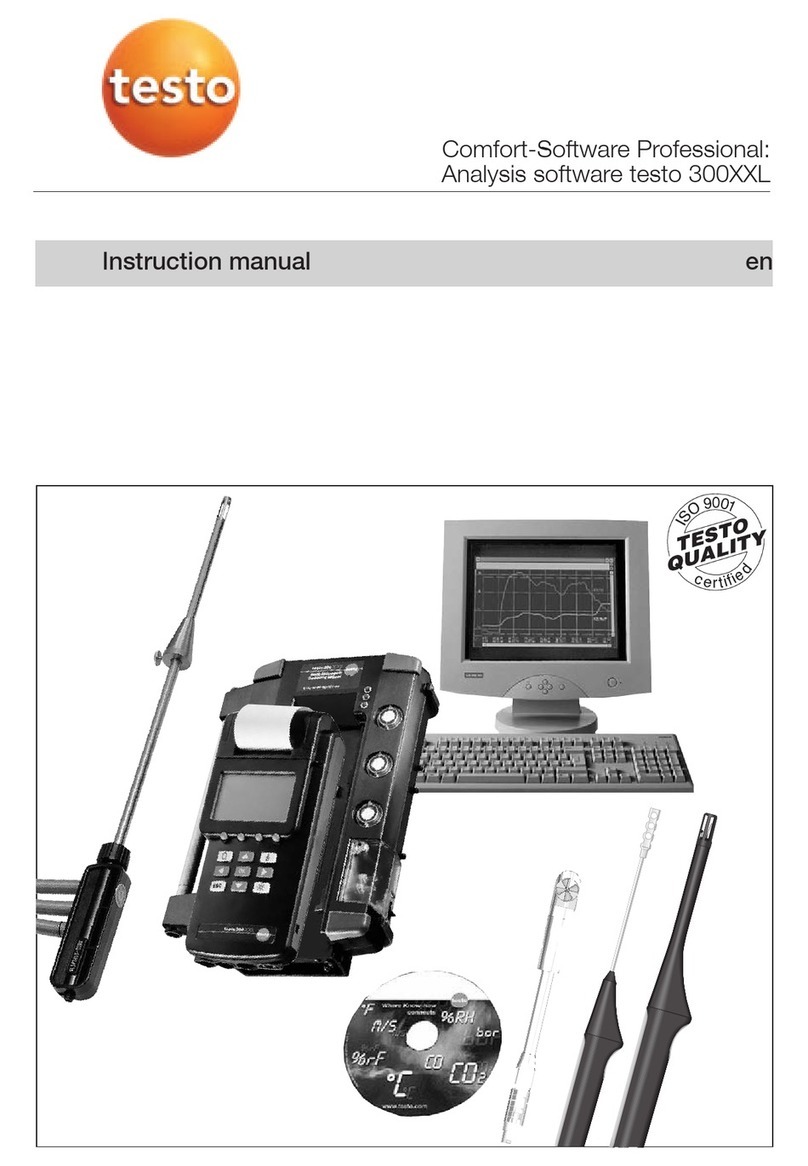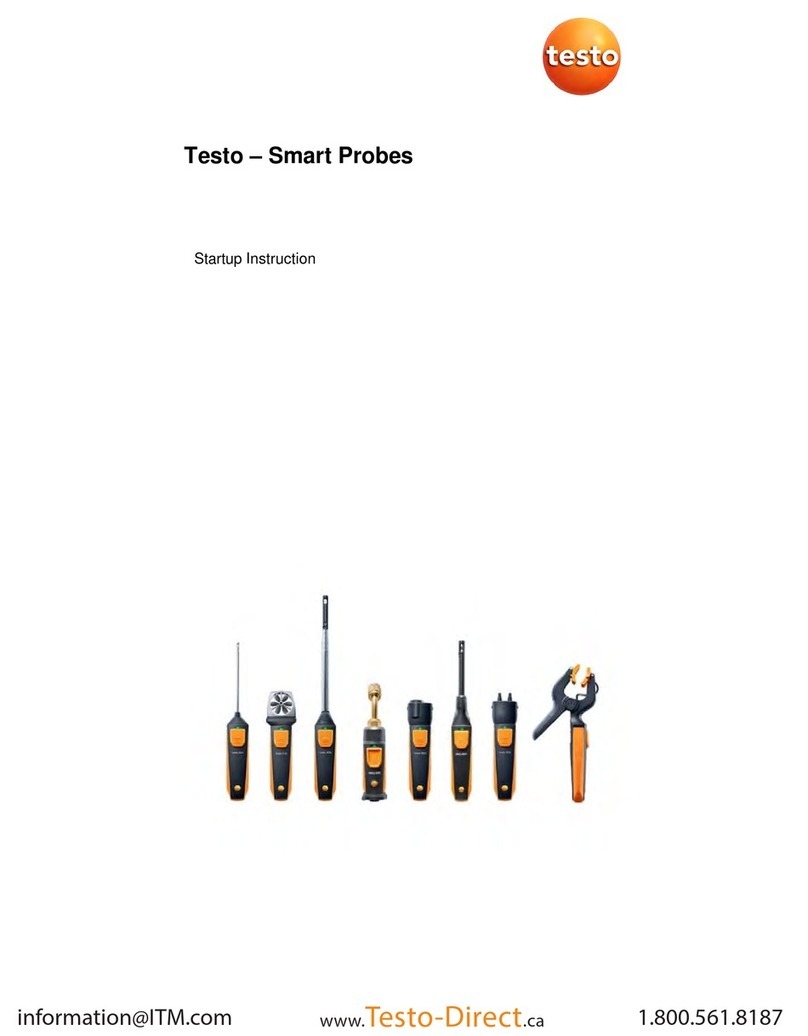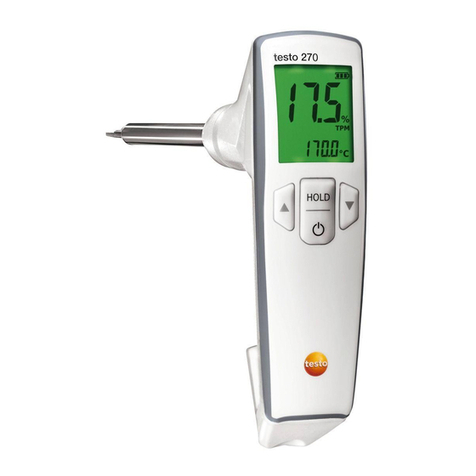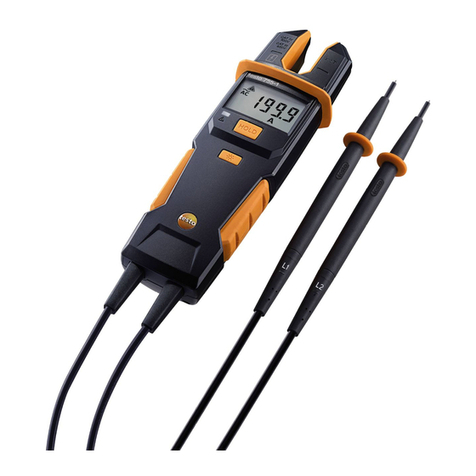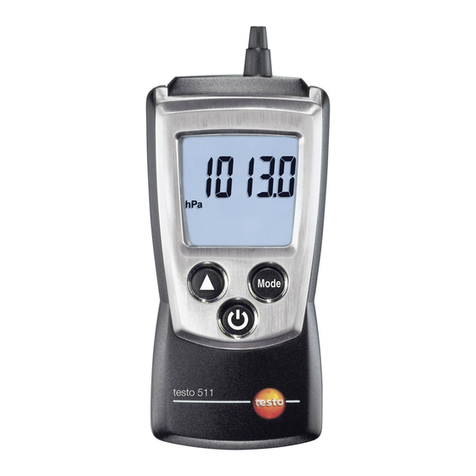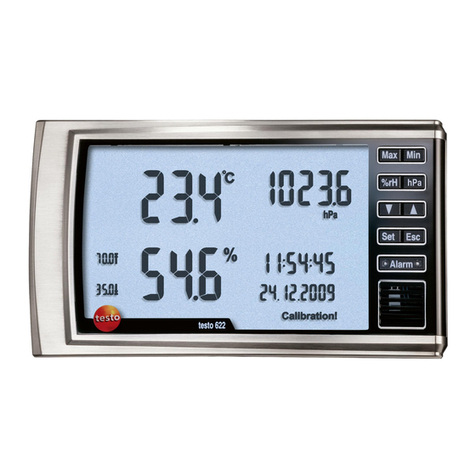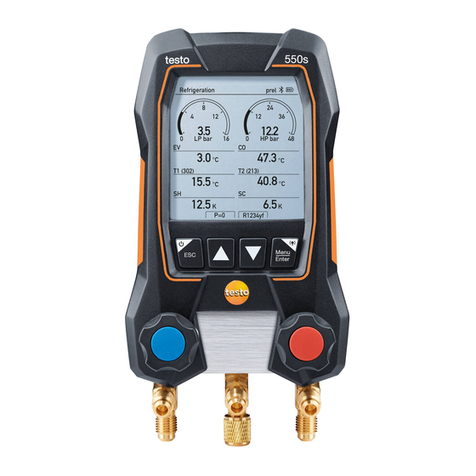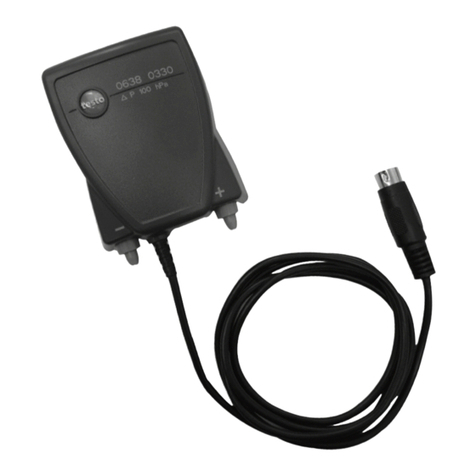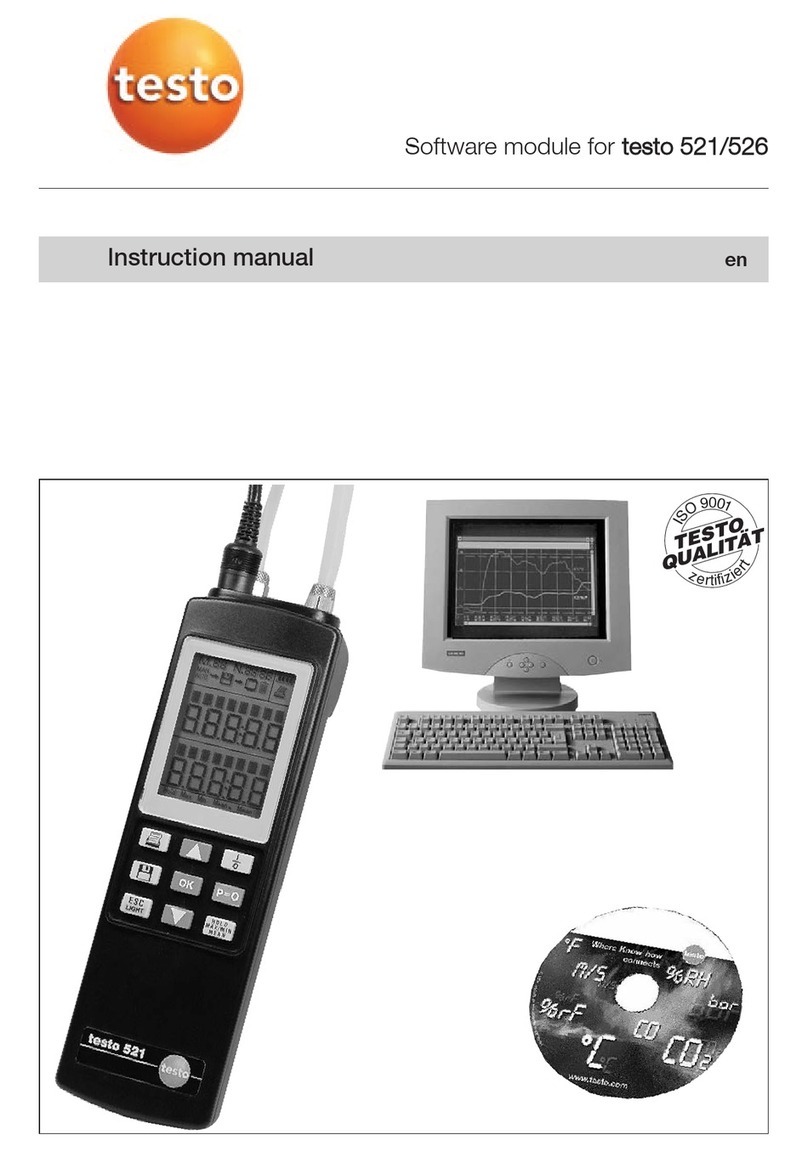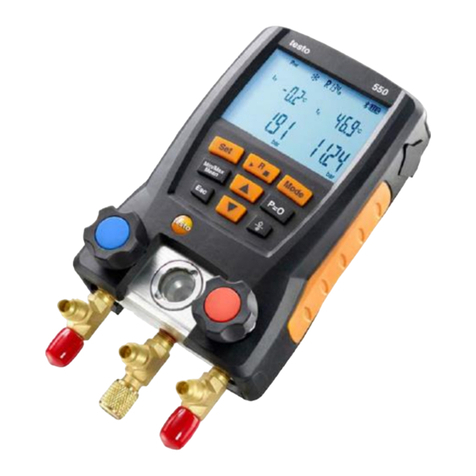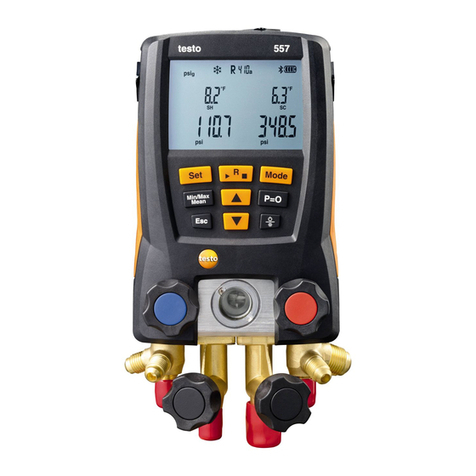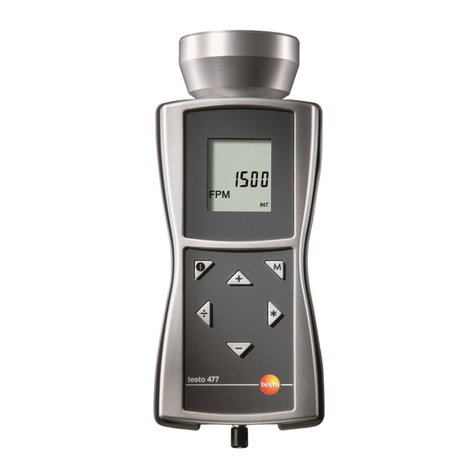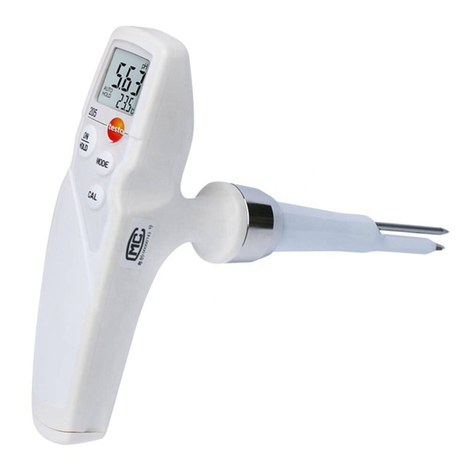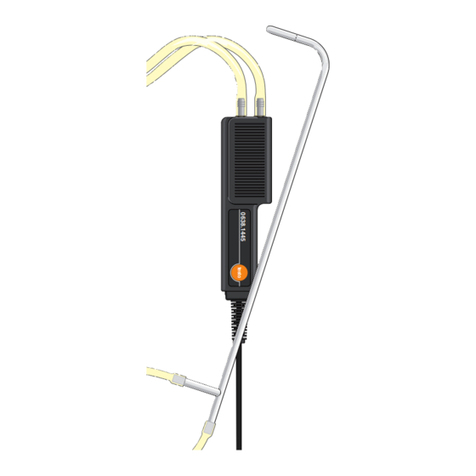
8 Carrying out a test
8
7.2. Switching the measuring point
illumination on/off (only testo 750-2 / -3)
> To switch on/off: briefly press the button.
The measuring point illumination switches off automatically after 2 minutes.
Only testo 750-3: the background illumination of the LCD display is
switched on/off at the same time as the measuring point illumination.
8Carrying out a test
8.1. Preparing the test
Prior to every test, please ensure that the instrument is in perfect condition:
• For example, keep an eye out for a broken housing or leaking
batteries.
• Always carry out a function test before using the voltage tester, see
below.
• Check that the instrument is functioning properly (for example at a
known voltage source) before and after every test.
• If the safety of the user cannot be guaranteed, switch off the instrument
and secure it to prevent unintentional usage.
Carrying out a function test
> Connect the voltage tester probe tips for 4 seconds and then
disconnect.
- All LEDs should light up. All segments are illuminated on the LCD
display (only testo 750-3).
Removing/installing the probe tip protector/extension
The probe tip protector and extension can be removed/installed as required.
To store these when not in use, we recommend the storage compartments
on the probe tip protective cap.
Attention: Use of the probe tip protector may be required depending on the
national regulations or provisions!
> Probe tip protector: push onto probe tips or pull off.
> Probe tip extension: screw onto probe tips or unscrew.
8.2. Voltage testing
> Connect both probe tips to the test object.
- The voltage tester switches on automatically at a voltage of
approximately 10 V or above.
- The voltage is indicated by LEDs (12 V, 24 V, 50 V, 120 V, 230 V,
400 V and 690 V).
On the testo 750-3, the voltage is also shown on the LCD display.
- In the case of DC voltage, the polarity of the indicated voltage relates
to the voltage tester probe tip.
- Once the safety extra-low voltage (50 V AC / 120 V DC) is reached or
exceeded, an acoustic signal is emitted.
Recording readings (only testo 750-3)
> Once voltage is applied to the measuring instrument, press the HOLD
button.
- A short acoustic signal is emitted and the LCD display shows the
recorded reading.
> To delete the recorded value, press the HOLD button once again.
- A short acoustic signal is emitted.













